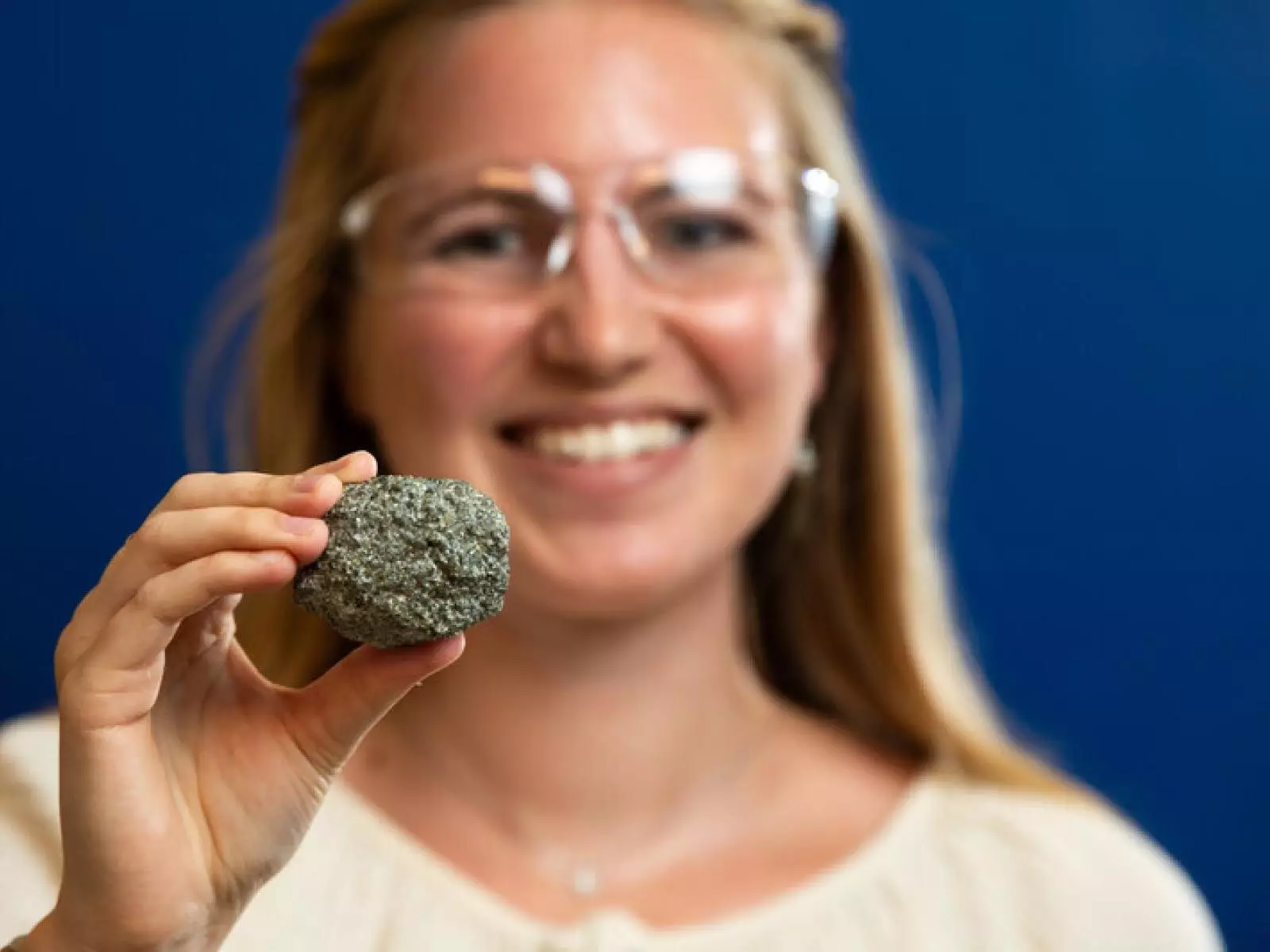As the world grapples with the overwhelming challenge of climate change, innovative solutions are rising from unexpected places. While much emphasis is placed on renewable energy sources and reducing carbon footprints, new research indicates that the answer to one of humanity’s most pressing problems may be found beneath our feet—in the Earth’s subsurface. Scientists at the Pacific Northwest National Laboratory (PNNL) have pioneered a groundbreaking method that transforms carbon dioxide (CO2) into solid rock through a process known as carbon mineralization. This strategy not only mimics natural geological processes but does so at an astonishing speed, reducing timelines from thousands of years to mere months.
The Science Behind Carbon Mineralization
Carbon mineralization is not merely an abstract concept; it represents a tangible strategy to combat excessive CO2 emissions. At its core, the process involves capturing CO2 from the atmosphere or industrial sources and storing it within stable mineral structures. Todd Schaef, PNNL’s Chief Chemist, highlights the critical need for systems that can reliably measure and verify the mineralization of CO2. Without rigorous verification methods, the efficacy of this innovative storage solution remains in question.
The importance of scaling up carbon mineralization cannot be overstated. To significantly influence the carbon balance in the atmosphere, scientists must transition from experimental setups to large-scale implementation. This necessitates collaboration among various stakeholders, including governmental agencies, industry, and local communities, working towards regulatory frameworks that support the deployment of this promising technology.
Quantifying Success: A Revolutionary Measurement Technique
Integral to the advancement of carbon mineralization research is the ability to accurately quantify how much CO2 is effectively converted into solid minerals. Intern Madeline Bartels has developed a cutting-edge approach that allows for measurements at previously undetectable levels—an astonishing capability that changes the landscape of carbon research. Her work, published in the journal Analytical Chemistry, introduces a novel method of utilizing thermogravimetric analysis mass spectrometry (TGA-MS).
Bartels’ method represents a significant leap in precision, enabling researchers to discern carbon mineral quantities at concentrations as low as 48 parts per million. To visualize this scale, one might liken it to the challenge of spotting a single playing card on a football field. This kind of granularity offers a clear window into the efficacy of carbon mineralization techniques, ushering in a new era of carbon management. By utilizing TGA-MS on finely powdered rock samples, researchers can gather data that was previously elusive, ushering in the potential for enhanced verification processes.
Promising Results and Future Prospects
Initial trials at sites such as the Wallula Basalt Pilot Demonstration site have demonstrated the feasibility of this process. Here, researchers injected nearly 1,000 metric tons of liquid CO2, later discovering that a substantial portion had solidified into rock over a short period. Such results instill hope that with continued refinement, carbon mineralization can be scaled up to combat America’s staggering CO2 emissions—over 6,300 million metric tons annually.
However, transitioning from a proof-of-concept phase to commercial application is fraught with challenges. Currently, regulatory frameworks governing the underground injection of CO2 are still in flux. For commercial ventures to proceed, permits must be secured, necessitating depth, dialogue, and diligence among all parties involved. This highlights the intersection of science, policy, and community consensus in deploying effective climate solutions.
Engaging the Next Generation of Scientists
An inspiring facet of this research narrative is how emerging scientists are engaged in groundbreaking work. Bartels’ journey as an undergraduate at Yale—that culminated with her first-author publication—demonstrates the importance of hands-on experience in shaping innovative researchers. Engaging future scientists through internship programs like the Department of Energy’s SULI initiative not only enriches their educational experience but catalyzes scientific discovery.
With leaders like Schaef committed to mentoring and cultivating young talent, the prospect of advancing carbon mineralization becomes increasingly viable. As more voices and ideas enter the arena, the potential for multidimensional strategies to expedite CO2 reduction grows, making room for diverse approaches to climate change challenges.
As we delve deeper into Earth’s processes to rewrite our relationship with carbon, the fusion of innovation, collaboration, and education is key. Not only do we stand on the brink of a promising technological revolution, but we also cultivate the next generation destined to drive it forward.


Leave a Reply